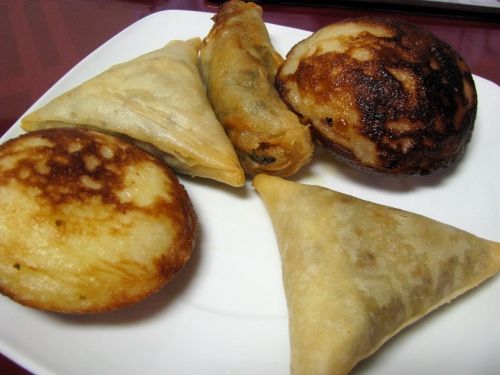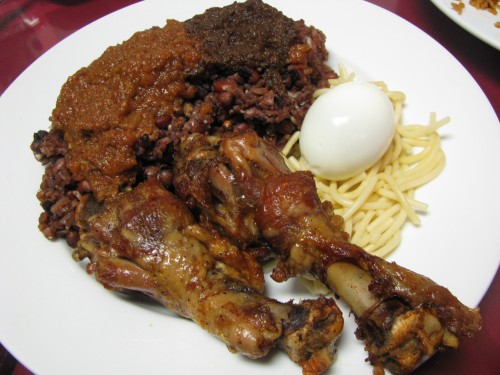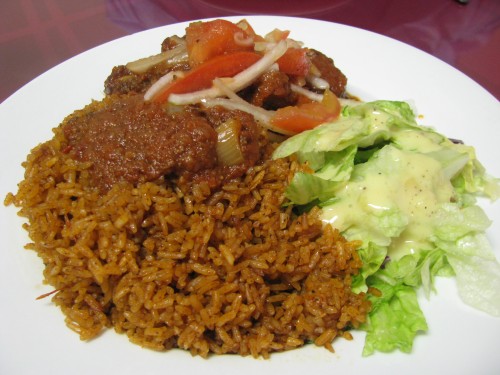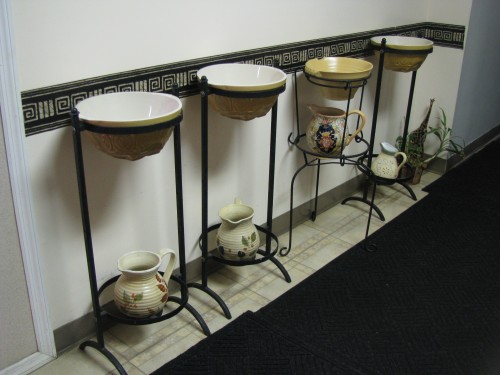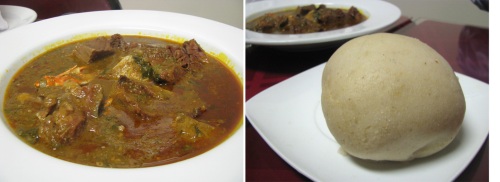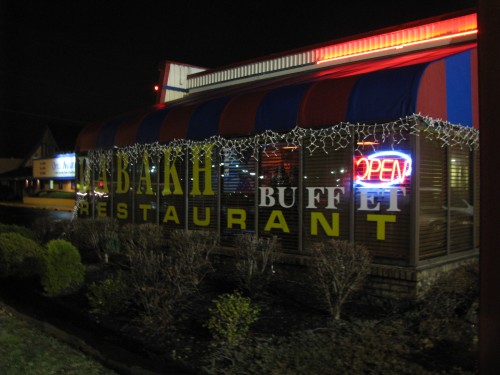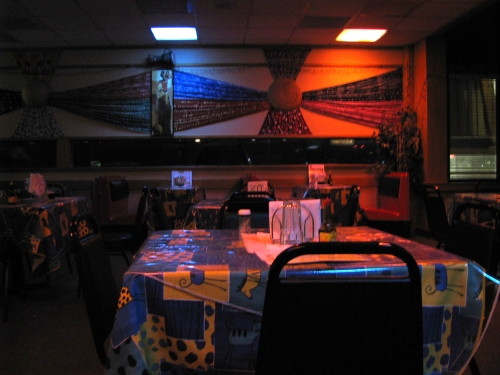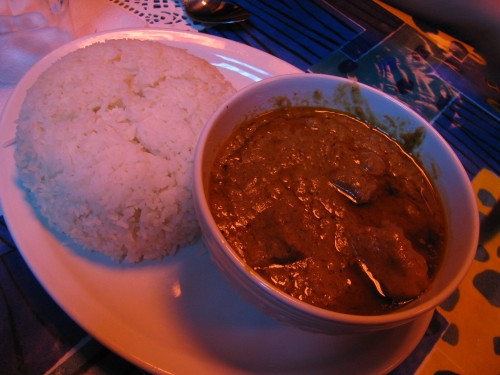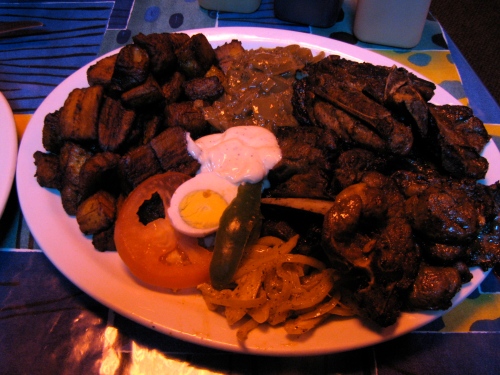Cuisine: Pan-African (Ghanaian, Senegalese, Tanzanian, Sierre Leone)
1911 Tamarack Circle
614.430.3350
Having struck out on the first couple of places we intended to try last night, we didn’t have high hopes for Drelyse being open either. They clearly weren’t, going by the signage on the door, but the door wasn’t locked and people were inside so we thought we’d grab a to-go menu and continue on.
Sayid, the (co?)owner and husband of the chef, wasn’t going to let us go so easily. Clocking us for first-timers we were, he graciously invited us to sit and promised to feed us the ‘best African food in the city’.
Hey, why not?
We started off with some small bite ($1.00 each) sambusas, vitumbua, and a nem spring roll.
The sambusas (triangular pockets filled with beef and spice) were wrapped in a thin phyllo-like shell that was nicely fried. The spicing was minimal, leaving the experience to be that of the crunch of the shell and the flavor of ground beef.
The vitumbua was more interesting – this traditionally Tanzanian breakfast food is something of a thick, bread-like rice patty made with coconut milk. Flavor was subtle when eaten alone – toasted crust of the exterior and just a hint of sweetness from the coconut were the main impressions – but when paired with the provided hot sauce it came into its own.
The nem was our favorite of the three and we wished we had ordered more than one. I believe they were made with pork and shrimp and seemed more Asian than African. They were really succulent and needed no accompaniment.
We were also given a taste of the beef peanut butter soup which was extremely hot (spice) with an intensely meaty broth.
As we finished these, our mains appeared – jollof rice with goat, okro (okra) stew with banku, and waakye (rice & beans) with chicken.
Waakye (pronounced watch-EH), we are told, is the national dish of Ghana. It’s little more than rice and beans, and if our experience is any indication, comes to life based upon the sauces atop it. The reddish sauce was similar to what came with the vitumbua. The darker sauce was fascinating – it had a mild fishiness from crayfish, a bit of a nuttiness, and finished with a spicy bite. It made the dish for me. The chicken was what you’d hope for from a carefully prepared grilled chicken, and the hard boiled egg and pasta garnish were entirely as expected.
The jolof rice was a potently seasoned concoction – red pepper for sure, and more herbs and spices beyond that than I could even begin to discern. Cooked with tomato, tomato paste, and sauteed onions, this was a pleaser. The goat, served on-the-bone, was tender and flavorful.
Finally, we tried the okra stew with banku. Since banku is used in lieu of utensils, this dish is preceded by the washing of hands at the table using the pitchers and bowls seen above (they’re brought to the table, and the server pours water over your hands with the pitcher.)
The banku (top right) is curious stuff, essentially a ball of dough, but far less tacky. Lacking the words to describe it myself, I’ll defer to the experts:
“Banku: Fermented corn/cassava dough mixed proportionally and cooked in hot water into a smooth whitish consistent paste.”
We tore off a few pieces, and used them to pinch a few morsels out of the stew. Or, at least we tried to.
Let me pause for a moment, and reflect on the word mucilaginous, as it is a common characteristic of some African okra dishes. It, stripped of elaboration, basically means gooey. In this case, very gooey – slimy, actually. It also meant that the okra dish resisted the banku in the same way that oil resists water.
Our server looked on, amused, as our pinching motions squirted hunks of beef across the bowl. Defeated, we reluctantly returned to forks and spoons… only to feel the sting of defeat once again.
The goo! We pride ourselves on being adventurous eaters, and operate under the assumption that any traditional dish that is widely consumed by any culture must have some measure of accessibility for the open-minded. This one, though… it resisted our best attempts to suss out its hidden charms (because they were slathered in goo.)
Beyond the okra, though, we found the meal to be quite satisfying. Governor Strickland feels similarly, and has used Drelyse as a caterer for events at his mansion. Drelyse has a significant vegetarian offering – covered in more depth here – and service is extravagantly attentive.
Also worth noting – Drelyse is planning to open its patio soon. Expect kebabs and other grilled dishes once this happens.


